DoD grant funds mTBI assessment via mobile app

Dual-tasking — the simultaneous performance of cognitive and motor tasks — is something we all do hundreds of times a day: Checking the time while running out the door. Reading while sipping coffee. Chatting while crossing the street.
Cleveland Clinic is a non-profit academic medical center. Advertising on our site helps support our mission. We do not endorse non-Cleveland Clinic products or services. Policy
So why shouldn’t neurological disorders — including mild traumatic brain injury (mTBI) — be evaluated in a way that reflects that reality, rather than assessing each function individually?
Currently, dual-task neurological evaluation isn’t widely available. It’s limited to universities and medical centers with biomechanics labs. But Cleveland Clinic researchers are getting closer to changing that by bringing dual-task evaluation to the patient — or, in military contexts, the soldier.
They’re doing so with help from a three-year, $1.3 million grant awarded to Cleveland Clinic by the U.S. Department of Defense to develop and validate a dual-task mTBI assessment for the military.
While dual-task capability is important for anyone, it can be a matter of life and death for military personnel, who may be monitoring data or interpreting radio transmissions while performing strenuous activity. The job is even more dangerous for personnel with or recovering from mTBI.
“Studies have demonstrated that following mTBI, soldiers often experience declines in postural stability as well as oculomotor and visual function,” says Jay Alberts, PhD, Director of Cleveland Clinic’s Concussion Center. These declines are more pronounced under dual-task conditions, he notes.
Accurate assessment of a soldier’s mTBI is vital but not always clear-cut. Corps-level medical personnel lack a cohesive system and standard tools, says Dr. Alberts. Access to tools is limited. Diagnostic methods vary. There are no established metrics.
“We hope to come up with simple dual-tasking and vision assessments and standards to use across their system,” says Dr. Alberts, who also serves as Vice Chair for Health Technology Enablement in Cleveland Clinic’s Neurological Institute. “We want to put more science into the art of evaluating and monitoring mTBI.”
In addition to aiding diagnosis, the assessments could help medical personnel determine appropriate treatment (such as rehabilitation or restrictive duty) or clearance to return to duty.
Dr. Alberts and his team aren’t starting from scratch. The basis for their military mTBI assessment is the acclaimed Cleveland Clinic-developed C3Logix™ mobile app for concussion assessment. Introduced by Dr. Alberts’ team in 2011, the app assesses concussion in high school and college athletes by using the gyroscope and accelerometer built into tablet devices to evaluate postural stability and, separately, using interactive tasks to evaluate cognitive function.
Modifying the C3Logix app for the military began in 2014, when Dr. Alberts’ team received an earlier Department of Defense grant to fund work to determine military-specific norms (which differ from civilian norms) for both motor and cognitive functions.
With their new grant, the team is combining functions into a dual-task assessment and establishing military-specific norms for it. They also will develop a vision assessment, including evaluating near point of convergence, near vertical phoria, near lateral phoria, horizontal vestibulo-ocular reflex and low-contrast visual acuity.
“There aren’t many people studying dual-tasking in a way that’s relevant — certainly not for mobile use,” says Dr. Alberts.
The three-year project is divided into two phases, each taking between 12 and 18 months.
Phase 1 includes developing dual-task-assessing software and validating it for civilians. Researchers will calibrate the C3Logix app with the industry’s leading biomechanical assessment tool, the CAREN (Computer Assisted Rehabilitation Environment) system.
“We’ll test gait and Stroop tasks [neuropsychological tests] on CAREN to determine which cognitive challenges have the most valuable effect on biomechanics, such as postural stability,” explains Dr. Alberts. “Then we’ll collect data from CAREN and the mobile app simultaneously to ensure the app produces accurate data.”
Phase 1 also includes designing visual acuity tests based on ophthalmic evaluation standards.
Phase 2 will include validating the dual-task and vision assessments for military personnel, setting military norms. Those will be based on findings from soldiers at Brooke Army Medical Center in San Antonio.
“We expect to have some initial results in early 2017,” says Dr. Alberts.
With this research grant, Cleveland Clinic is attempting to mobilize the benefits of a biomechanics lab and neuro-ophthalmology exam through an affordable, scalable, easy-to-use tool.
“This mobile app could provide a more systematic way of evaluating service members,” says Dr. Alberts. “And it could be deployed anywhere.”
An added benefit: The paradigms used for military personnel could be repurposed for civilians — particularly those who have issues with dual-tasking, such as older adults and people with neurological diseases.
“We’re using objective methods to evaluate cognitive and motor function simultaneously, which could become a better method of helping us understand neurological disease,” says Dr. Alberts.

Taking virtual reality-integrated technology from silver screen to clinical laboratory
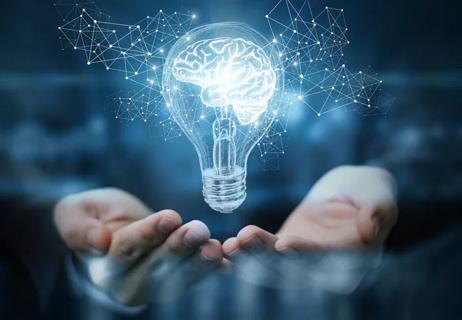
Novel collaboration is underway to foster innovation – and a real-world invention
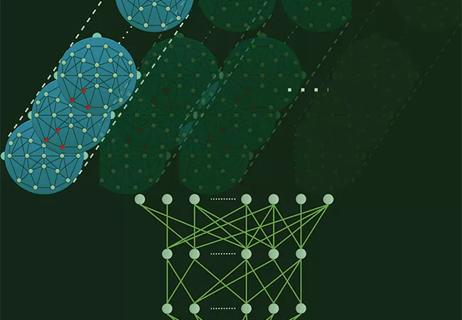
Strong performance from early models heralds eventual reshaping of care
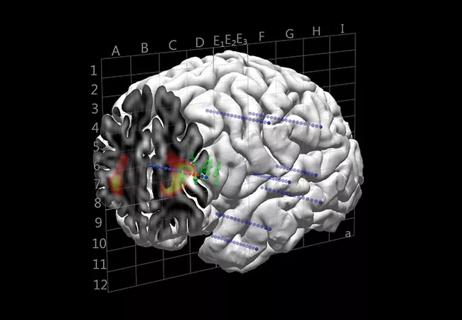
Novel approach is improving presurgical evaluation
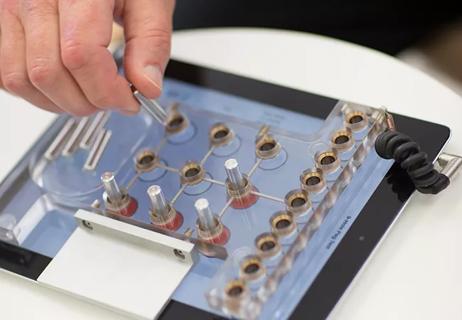
Important progress toward predictive analytics in MS and PD

A quick review of 3D-printed models, intrasaccular flow disruption and flow diverter stenting

Early results with ‘HeRe We Arts’ spur testing in a randomized trial
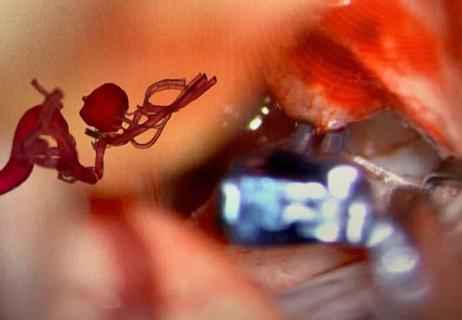
One of first reported uses of the technology for a cerebrovascular malformation